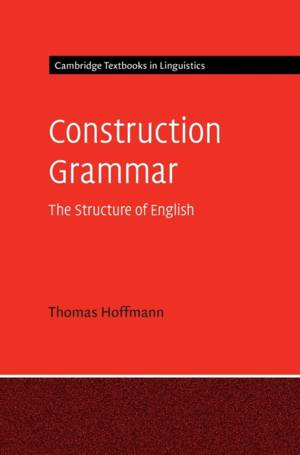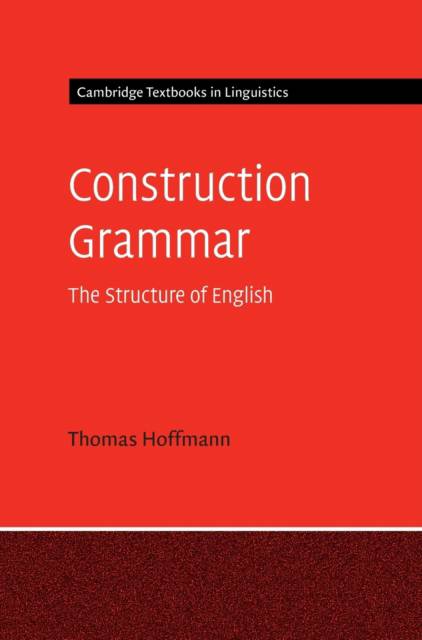
Door een staking bij bpost kan je online bestelling op dit moment iets langer onderweg zijn dan voorzien. Dringend iets nodig? Onze winkels ontvangen jou met open armen!
- Afhalen na 1 uur in een winkel met voorraad
- Gratis thuislevering in België vanaf € 30
- Ruim aanbod met 7 miljoen producten
Door een staking bij bpost kan je online bestelling op dit moment iets langer onderweg zijn dan voorzien. Dringend iets nodig? Onze winkels ontvangen jou met open armen!
- Afhalen na 1 uur in een winkel met voorraad
- Gratis thuislevering in België vanaf € 30
- Ruim aanbod met 7 miljoen producten
Zoeken
€ 172,95
+ 345 punten
Uitvoering
Omschrijving
What do speakers of a language have to know, and what can they 'figure out' on the basis of that knowledge, in order for them to use their language successfully? This is the question at the heart of Construction Grammar, an approach to the study of language that views all dimensions of language as equal contributors to shaping linguistic expressions. The trademark characteristic of Construction Grammar is the insight that language is a repertoire of more or less complex patterns - constructions - that integrate form and meaning. This textbook shows how a Construction Grammar approach can be used to analyse the English language, offering explanations for language acquisition, variation and change. It covers all levels of syntactic description, from word-formation and inflectional morphology to phrasal and clausal phenomena and information-structure constructions. Each chapter includes exercises and further readings, making it an accessible introduction for undergraduate students of linguistics and English language.
Specificaties
Betrokkenen
- Auteur(s):
- Uitgeverij:
Inhoud
- Aantal bladzijden:
- 350
- Taal:
- Engels
- Reeks:
Eigenschappen
- Productcode (EAN):
- 9781107013490
- Verschijningsdatum:
- 28/07/2022
- Uitvoering:
- Hardcover
- Formaat:
- Genaaid
- Afmetingen:
- 170 mm x 244 mm
- Gewicht:
- 734 g

Alleen bij Standaard Boekhandel
+ 345 punten op je klantenkaart van Standaard Boekhandel
Beoordelingen
We publiceren alleen reviews die voldoen aan de voorwaarden voor reviews. Bekijk onze voorwaarden voor reviews.











